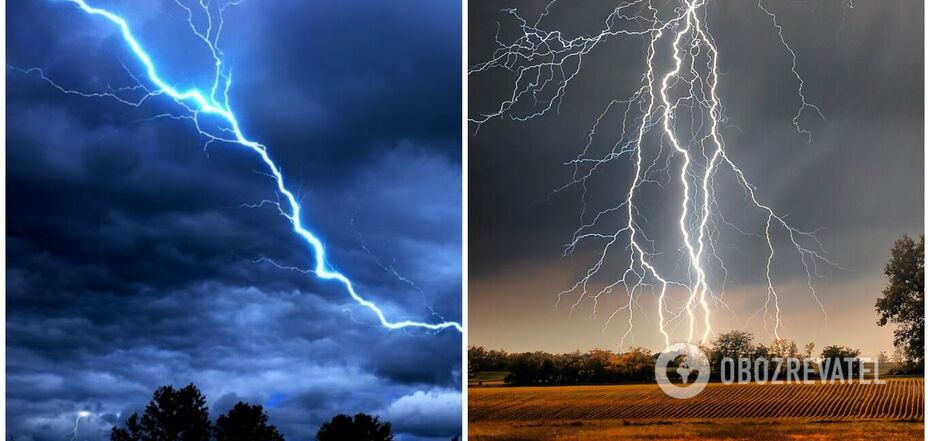News
Five times hotter than the Sun: six surprising facts about lightning you might not have known
An atmospheric phenomenon such as lightning manifests itself as a powerful electrical discharge and occurs mainly during rain. For most people, this is a rather seasonal phenomenon that can be seen only a few times a year.
However, in fact, lightning strikes an average of 8.6 million times every day, with the hottest spot in the world being in Venezuela. OBOZ.UA has collected the most interesting and surprising facts about lightning that you did not know.
Lightning is 5 times hotter than the Sun
When lightning strikes the Earth, it releases a huge discharge of electricity, which leads to a huge increase in temperature. Therefore, at the moment of impact, it becomes five times hotter than the Sun. The temperature of a lightning strike can reach 29.7 thousand degrees Celsius, while the surface temperature of the Sun is only about 5,800 degrees Celsius.
However, the average lightning strike lasts only 30 microseconds, so such a huge temperature in most cases does not lead to tragic consequences.
Scientists note that the extreme temperature difference emphasizes the incredible energy released during a lightning strike, which for a short time eclipses even the surface temperature of the Sun.
Millions of lightning strikes per day
Every day, lightning strikes the surface of our planet millions of times. Scientists estimate that it is about 8.6 million lightning discharges per day. The hottest lightning spot in the world is Lake Maracaibo in Venezuela.
If you ever decide to go there, there is an 80% chance that you will experience a nighttime thunderstorm. Lake Maracaibo's unique geographical and meteorological conditions create an environment where thunderstorms and lightning are exceptionally frequent and intense, making it the world's lightning capital.
Almost 90% of people experience lightning strikes
Lightning strikes are short but incredibly intense flashes that can cause burns. Lightning voltages can range from 100 million to 1 billion volts, so a seemingly single lightning strike can be fatal to a person.
However, it does not necessarily lead to death. This is often the case because lightning does not strike a person directly, rather in the immediate vicinity.
So, even after being struck by lightning, most people retain a high chance of survival.
Lightning enriches the soil with nitrogen
Lightning is an electrostatic discharge caused by ionized air. 78% of air consists of nitrogen, which is held in the form of N2.
Lightning breaks down N2 into NO2, which enters the soil to form nitrates, and then the human body uses this form of nitrogen from plants.
This process of nitrogen fixation is part of the nitrogen cycle. Overall, the nitrogen cycle is crucial for life because it converts N2 into useful compounds.
Volcanic eruptions cause lightning strikes
Lightning usually occurs in sync with volcanic eruptions. When the ash of a volcano rises up, it creates static electricity in the same way that clouds do.
The interaction between lightning and volcanic eruptions is caused by the release of electrically charged particles and gases during volcanic activity.
This creates conditions conducive to the formation of lightning inside volcanic plumes, an electrifying spectacle that can illuminate even dark skies.
Lightning finds the fastest way to Earth
Lightning always takes the path of least resistance. It finds the fastest path by dodging obstacles. Imagine that a lightning strike is like walking through a crowd of people. You can't go straight through the crowd, but you maneuver around, finding gaps. This is how the path of least resistance works.
In fact, the path of least resistance, much like moving through a crowd, is the path that electricity follows in search of the most efficient and conductive path between two points, obeying the fundamental principles of electrophysics.
This factor explains the operation of lightning rods, which are installed as high as possible compared to the nearest objects.
Only verified information is available on OBOZ.UA Telegram and Viber. Do not fall for fakes!



























